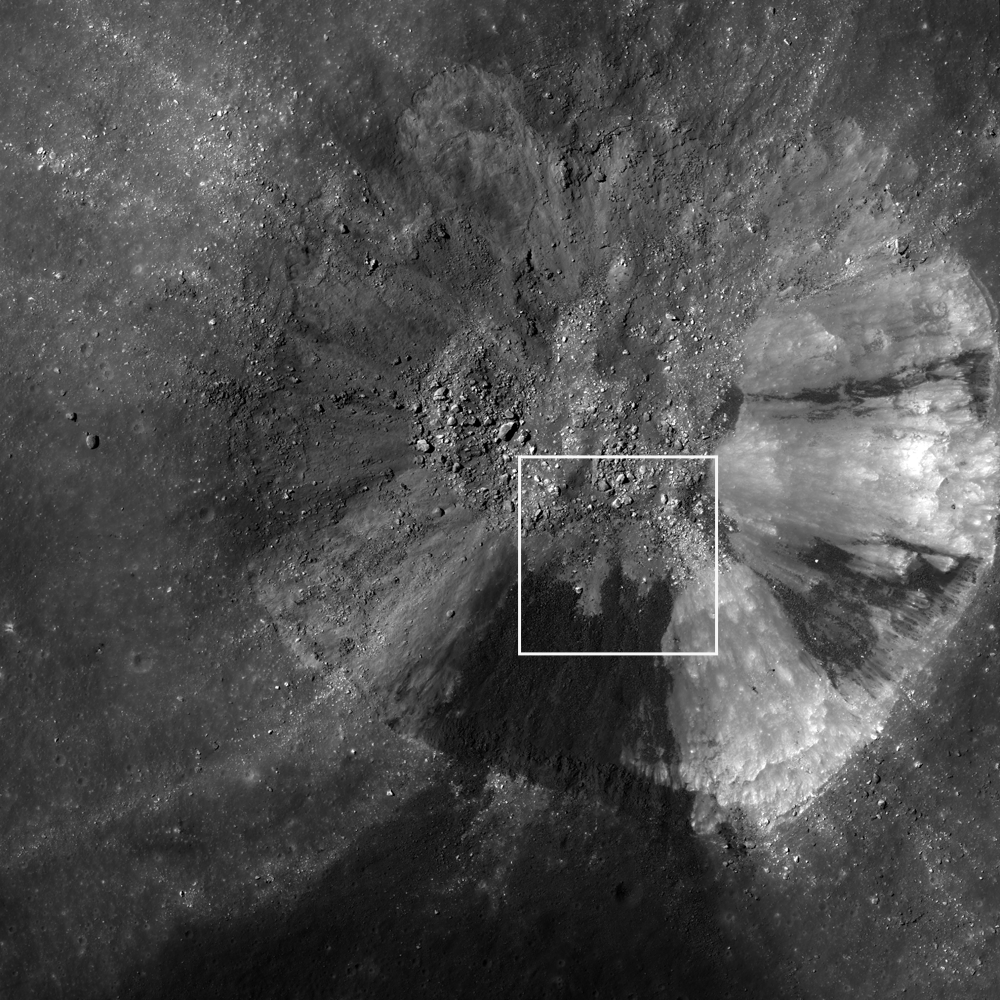Today's Featured Image was chosen to showcase the extraordinary range in surface textures and reflectivities possible within a small area (half a kilometer square) on the Moon. Recent impact craters often present fine examples of such terrain. This small (less than 2 km diameter) crater exhibits boulders 45 m in length to fine particles and reflectivities that vary from high to low.
Prior to Narrow Angle Camera (NAC) imaging, the low-reflectance wedge along the southern crater rim of this crater was generally regarded to be an example of an "impact exclusion zone." Such a zone results when a bolide on a low-angle trajectory produces a heterogeneous energy distribution that unevenly deposits its excavated ejecta. Examples of non-symmetric bright ejecta as seen in the Wide Angle Camera (WAC) mosaic image below (two frames down) are observed at a significant number of fresh impact craters. Laboratory experiments have shown that non-symmetric ejecta patterns can result from low angle impacts. In today's Featured Image, it is clear at the NAC scale that low-reflectance materials have cascaded back into the crater from layers exposed in the crater wall. The dark boulders then became juxtaposed with blocky debris on the crater floor and intermixed with patches of fine-grained deposits.
Based on the features we can see now, is the low-reflectance wedge-shaped ejecta pattern truly the result of a low-angle impact, or is ejecta simply darker in the southern direction -- perhaps resulting from the buried layer of darker deposits exposed in the crater wall and ejected by the blast? What clues could help us resolve the question? A geologist explorer on the ground would be tempted to draft a map of these different deposits to see if dark material has been ejected south of the crater. Even from the NAC image, it is clear that some dark material has been ejected intro the impact exclusion zone.
Before zooming in on the NAC image, it might be unknown whether the dark material inside the crater is a dry debris flow or impact melt. What is your determination? Do we see any signs in the low-reflectance deposits that would indicate the presence of lava-like impact melt?
Explore the full NAC image below. Other examples of recent impacts can be found in Ejecta Starburst, Recent Impact in Oceanus Procellarum, and Rubble Pile on Fresh Crater Floor.
Published by James Ashley on 27 September 2012

